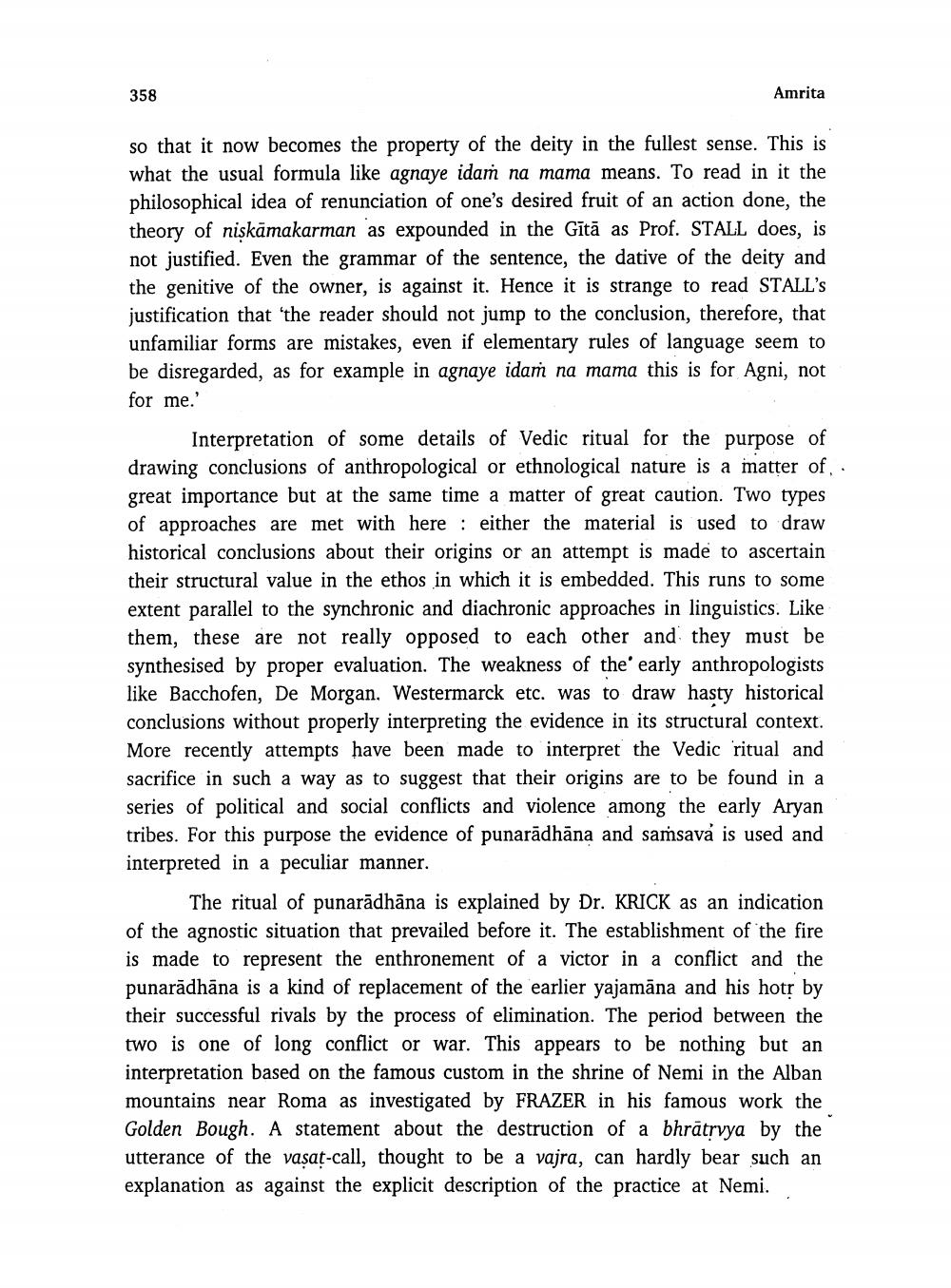________________
358
Amrita
so that it now becomes the property of the deity in the fullest sense. This is what the usual formula like agnaye idam na mama means. To read in it the philosophical idea of renunciation of one's desired fruit of an action done, the theory of nişkāmakarman as expounded in the Gītā as Prof. STALL does, is not justified. Even the grammar of the sentence, the dative of the deity and the genitive of the owner, is against it. Hence it is strange to read STALL's justification that 'the reader should not jump to the conclusion, therefore, that unfamiliar forms are mistakes, even if elementary rules of language seem to be disregarded, as for example in agnaye idam na mama this is for Agni, not for me.'
Interpretation of some details of Vedic ritual for the purpose of drawing conclusions of anthropological or ethnological nature is a matter of great importance but at the same time a matter of great caution. Two types of approaches are met with here : either the material is used to draw historical conclusions about their origins or an attempt is made to ascertain their structural value in the ethos in which it is embedded. This runs to some extent parallel to the synchronic and diachronic approaches in linguistics. Like them, these are not really opposed to each other and they must be synthesised by proper evaluation. The weakness of the early anthropologists like Bacchofen, De Morgan, Westermarck etc. was to draw hasty historical conclusions without properly interpreting the evidence in its structural context. More recently attempts have been made to interpret the Vedic ritual and sacrifice in such a way as to suggest that their origins are to be found in a series of political and social conflicts and violence among the early Aryan tribes. For this purpose the evidence of punarādhāna and samsava is used and interpreted in a peculiar manner.
The ritual of punarādhāna is explained by Dr. KRICK as an indication of the agnostic situation that prevailed before it. The establishment of the fire is made to represent the enthronement of a victor in a conflict and the punarādhāna is a kind of replacement of the earlier yajamāna and his hotr by their successful rivals by the process of elimination. The period between the two is one of long conflict or war. This appears to be nothing but an interpretation based on the famous custom in the shrine of Nemi in the Alban mountains near Roma as investigated by FRAZER in his famous work the Golden Bough. A statement about the destruction of a bhrātrvya by the utterance of the vasat-call, thought to be a vajra, can hardly bear such an explanation as against the explicit description of the practice at Nemi.




